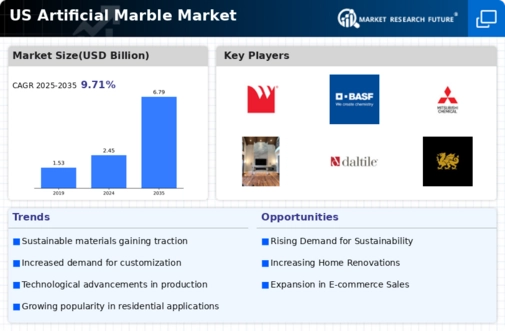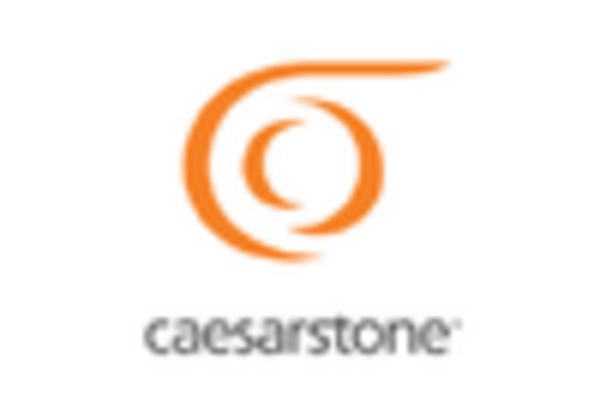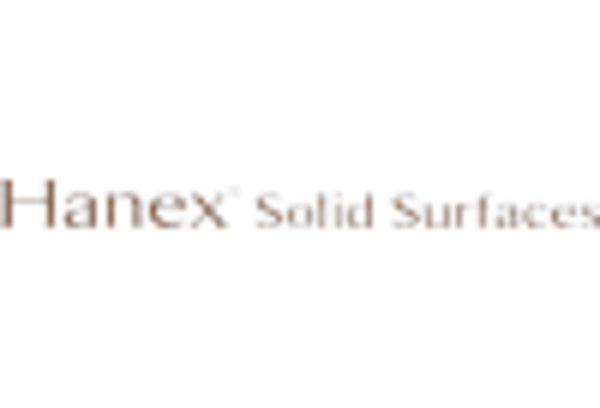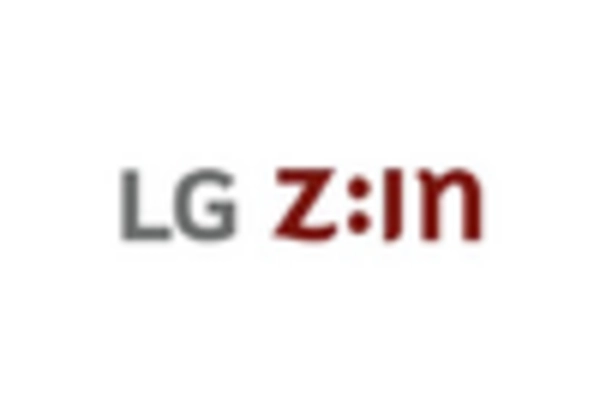Growth in Construction Activities
The artificial marble market is poised for growth, largely fueled by the ongoing expansion of construction activities across the United States. With the construction sector projected to grow by approximately 5% annually, the demand for materials that offer both durability and aesthetic appeal is on the rise. Artificial marble, known for its resilience and low maintenance requirements, is increasingly favored in both residential and commercial construction projects. The artificial marble market stands to benefit from this trend, as builders and architects seek materials that can withstand the rigors of modern construction while providing an attractive finish. Furthermore, the integration of artificial marble in high-traffic areas, such as shopping malls and office buildings, underscores its suitability for contemporary architectural designs.
Rising Demand for Aesthetic Appeal
The artificial marble market experiences a notable surge in demand driven by the increasing consumer preference for aesthetic appeal in interior design. Homeowners and commercial property developers are increasingly opting for artificial marble due to its ability to mimic the luxurious appearance of natural stone at a fraction of the cost. This trend is particularly evident in the residential sector, where the market is projected to grow at a CAGR of approximately 6.5% over the next five years. The artificial marble market benefits from this shift as it aligns with the growing trend of home renovation and remodeling, where visual appeal plays a crucial role in decision-making. Furthermore, the versatility of artificial marble allows for a wide range of applications, including countertops, flooring, and wall cladding, thereby expanding its market reach and enhancing its attractiveness to consumers.
Cost-Effectiveness of Artificial Marble
Cost considerations significantly influence purchasing decisions in the artificial marble market. Compared to natural stone, artificial marble offers a more budget-friendly alternative without compromising on quality or aesthetics. The average price of artificial marble is approximately 30-50% lower than that of natural marble, making it an appealing choice for both residential and commercial projects. This cost-effectiveness is particularly advantageous for large-scale developments, where budget constraints are paramount. As the construction and renovation sectors continue to expand, the artificial marble market is likely to see increased adoption due to its affordability. Additionally, the lower maintenance costs associated with artificial marble further enhance its appeal, as consumers seek long-term value in their investments.
Technological Innovations in Manufacturing
Technological advancements in manufacturing processes are significantly impacting the artificial marble market. Innovations such as improved resin formulations and advanced casting techniques have enhanced the quality and durability of artificial marble products. These developments allow manufacturers to produce a wider variety of colors and patterns, catering to diverse consumer preferences. The artificial marble market is likely to benefit from these innovations, as they enable the production of high-quality products that meet the evolving demands of consumers. Furthermore, automation in manufacturing processes is expected to reduce production costs, thereby increasing competitiveness in the market. As technology continues to evolve, the artificial marble market is positioned to capitalize on these advancements, potentially leading to increased market share and profitability.
Increased Awareness of Environmental Impact
As consumers become more environmentally conscious, the artificial marble market is witnessing a shift towards sustainable materials. The artificial marble market is adapting to this trend by promoting products that are manufactured using eco-friendly processes and materials. This shift is indicative of a broader movement within the construction and design sectors, where sustainability is becoming a key consideration. The market for sustainable artificial marble is expected to grow, as consumers increasingly seek products that align with their values. Additionally, the use of recycled materials in the production of artificial marble not only reduces waste but also appeals to a growing demographic that prioritizes environmental responsibility in their purchasing decisions.

















Leave a Comment